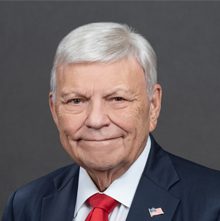2022: Price Increases, Slow Growth
Modest economic growth should continue as the year progresses; however, challenges with labor, materials and inflation will persist.

January marks the beginning of the new calendar year for many of us in the PVF industry. Our industry faces many uncertainties as we begin to plan and maneuver through the year. The outlook for construction is a slow but steady path to recovery. Modest economic growth should continue as the year progresses; however, challenges with labor, materials and inflation will persist.
“I expect to see a significant upward pressure on prices as we move into the new year,” notes Julian Anderson, president of Rider Lovett Bucknall (RLB). RLB/America is an independent global construction and property consultancy that provides management advice throughout the built environment.
Dodge Construction Network chief economist Richard Branch predicts a 6 percent increase in the dollar value of construction for 2022. Branch notes that “while the construction starts will grow in 2022, that growth will be modest.” He also notes that “hope must be tempered” as the industry continues to face a number of challenges.
“In a world where prices are rising, materials are hard to come by and labor is scarce, the ability to do more with less is what’s going to be a critical path forward in terms of increasing your profit margin,” he adds. “I don’t see a slowdown happening until the Federal Reserve’s decision to taper its bond-buying starts to be felt and interest rates start to rise.”
As of this writing, Federal Reserve Chairman Jerome Powell is hinting that it may be necessary to expedite finishing bond buying tapering and address the interest rate to curb hyperinflation. It remains uncertain how the advent of the omicron variant of the coronavirus that causes COVID-19 will impact the economy and the Federal Reserve’s response.
A chorus of Fed policymakers say rising inflationary pressures are no longer “transitory” and are supporting a normalizing policy. Normalizing refers, in part, to interest rate hikes which many Fed watchers expect to happen in 2022. However, before the Fed can start to raise rates from the current levels of near-zero, the policy-setting Federal Open Market Committee will likely want to end its asset purchases first.
Pipeline Updates
The Biden administration’s policies against the energy sector continue with proposed higher taxes and regulations on drilling and production of oil on federal land leases. Oil production from federal lands accounts for 10 percent of total domestic production.
In addition, Michigan Gov. Gretchen Whitmer dropped the federal case against Enbridge to clear the path for state court cases. Line 5 provides approximately 40 percent of the oil and gas for the upper Midwest. The uncertainty resulting from her action, along with the devastating fallout from a closure of the pipeline as winter approaches, continue to add upward pressure on energy prices.
Enbridge continues to contend that Line 5 is a federal matter, invoking a 1977 pipeline treaty with the United States to trigger negotiations between Ottawa, Canada, and Washington, D.C.
The Pipeline and Hazardous Materials Safety Administration made a final groundbreaking ruling dramatically increasing the mileage of regulated pipelines in the United States by adding 400,000 miles of onshore gathering pipelines to regulated status. The new regulations also change the classification of some gathering lines to transmission lines. Any pipeline that is 10 or more miles in length is now a transmission line.
Operators are now faced with additional documentation requirements for gathering lines, validation of jurisdiction determination for gathering lines and requirements for incident reporting. The final ruling becomes effective on May 2, 2022.
Oil and Gas Spending
U.S. shale expenditure is projected to surge 19.4 percent, per Rystad Energy, up from $69.8 billion in 2021 to $83.4 billion in 2022. This is the highest level since the onset of the COVID-19 pandemic.
The Eagle Ford, Niobrara and Anadarko regions are anticipated to beat nationwide average spending due to the rig activity expansion experienced in recent months. The Bakken region is forecasted to have 19 percent spending growth in 2022, thus matching the national average, while the Permian basin is set to grow by 17 percent.
On the gas side, Rystad Energy anticipates a 15 percent growth in spending from Appalachia and around 10 percent growth in Haynesville. While the full-year growth is higher in Appalachia, this does not mean a stronger increase in fracking activity in the northeast region as the supply remains constrained by the lack of takeaway capacity.
A new approach to determine technically recoverable gas resources (TRR) carefully screened well-performance data and mapped TRR at high spatial resolution in the Marcellus and Utica plays. This approach estimated 693 trillion cubic feet (tcf) remains as undiscovered TRR gas resources for the Marcellus play and 684 tcf for the Utica play, exceeding many recent assessments.
Increased Appalachian gas production needs continued pipeline growth. Although natural gas pipeline capacity out of the northeast has grown every year since 2014, the rate of growth has not kept pace with growth in production. Supply bottlenecks such as this have contributed to 13-year highs in U.S. natural gas prices.
Supply Chain Woes
With supply-chain constraints, port-of-entry constraints, escalating energy costs, trucker shortages and skilled worker shortages, close contact with your manufacturer/supplier is highly recommended to avoid stock outages, unexpected delays in shipping as well as anticipated price increases as we move into 2022.
It is worth noting, herein, that supporting domestic manufacturers now and in the future can reduce lengthy backlogs, higher inventory carrying charges and liability exposure. The price differential of offshore and domestic products has narrowed significantly; combined with supply chain bottlenecks, it makes domestic products more competitive and a more reliable source of supply.
Due to the shortages of materials, some suppliers have resorted to deceptive practices and illegal acts.
Recently, a distributor responded to a request for a 10-inch Class 900 valve and substituted a Class 600 valve that was “upgraded” to a Class 900 valve. They altered the Certified Material Test Report (CMTR) and sent the product to be installed. After the altered valve failed, they were sued and lost at trial for more than $1.5 million dollars.
In addition, another supplier has changed the color of its welding fittings and flanges to match the color of a major domestic manufacturer to deceive clients into thinking they are receiving the major manufacturer’s product. This may result in receiving material that is out-of-tolerance or noncompliant.
Check your CMTRs to ensure you are receiving the product you ordered.
PVF Roundtable News
The first Networking Meeting of 2022 will be held Feb. 8, beginning at 4:15 p.m. (CDT) at Houston’s The Bell Tower on 34th.
The annual golf tournament and the TroutBlast are the two major fundraising events held by the PVF Roundtable Charitable Foundation. All funds raised are dedicated to the PVF Roundtable scholarship programs.
The PVF Christmas Party “Fill the Pantry” was held Dec. 7 at The Bell Tower on 34th. It was well-attended and supported. Thanks to all the sponsors, volunteers and committee members — and all who donated.
As a member of the board of directors, and I speak for all members, we thank-you for your participation in these events.
The Networking Meetings are a unique venue for you and your associates to network with your peers in the PVF industry. These events provide the platform to share information, discuss pertinent issues, meet new contacts, develop new and long-lasting friendships, and pursue new opportunities in the industry.





